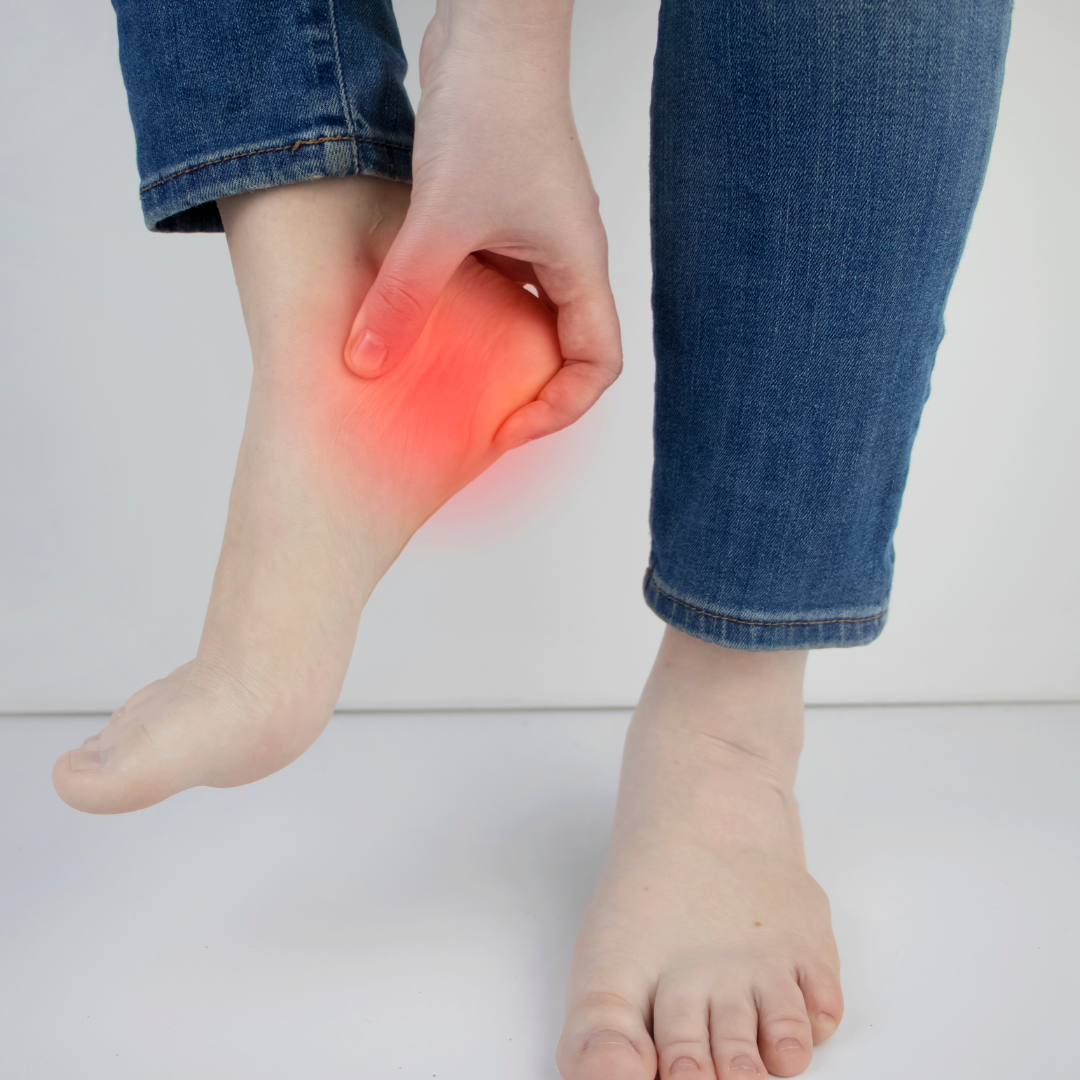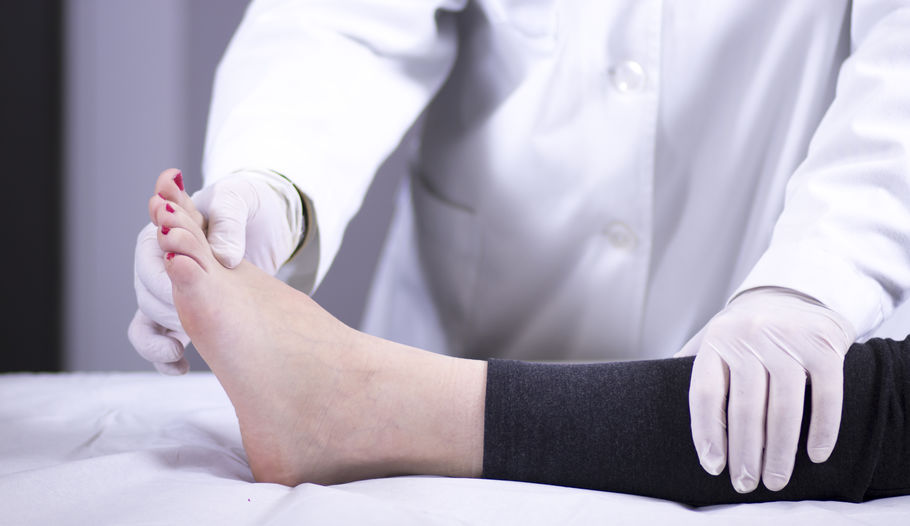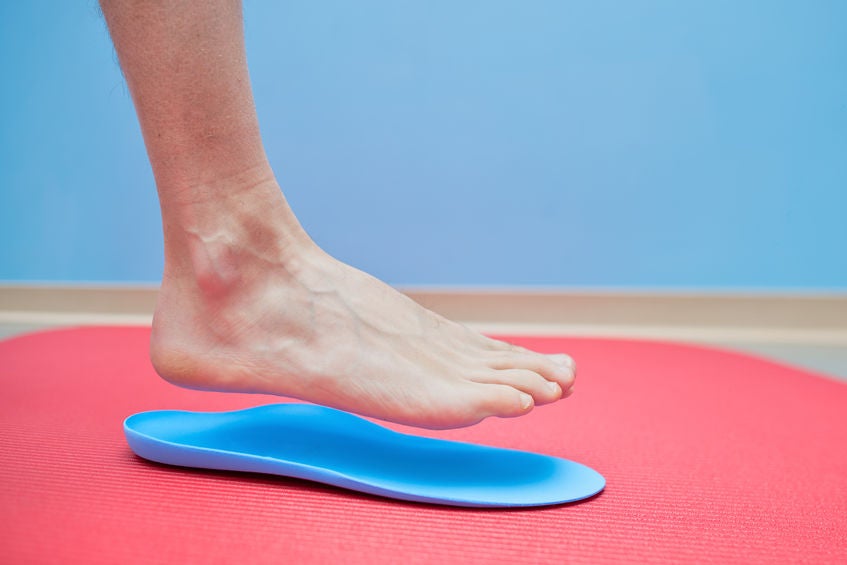-
Running Shoes: Start Off on The Right Foot!

If you run, you need the right footwear. Fortunately, Kentlands Foot and Ankle Center is well-prepared to support your footwear needs. Before you decide which shoe is right for you, let’s break down some common tips that can improve performance and ensure sustainability.
Here are some Do’s and Don’ts to follow before purchasing new running shoes
DON’T run in old, beat-up shoes. Runners need to be prepared, and footwear is no exception. To keep shoes fresh, try to have two pairs on hand and alternate them. The wear and tear from repeated motions erodes the support of a running shoe, which might increase your risk of injury.
DO invest in a pair of good socks and laces. The right pair of socks will provide valuable cushioning and even help with sweating. Laces with ‘bumps’ along them might cost a little more, but they don’t slide around in your shoes.
DON’T ignore the unique traits of your feet. Do you have high, flat, or neutral arches? Do your ankles roll when you run? These are the kinds of details our experts can help you with, and knowing about them beforehand will help you choose the right shoes for you.
DO consider custom orthotics. These can enhance your running game by helping to prevent injuries before they occur. And we can help you find the perfect fit! At Kentlands, there are no more clunky plaster casts or lengthy waiting times. Instead, we employ our new 3D laser scanner to perform a clinical examination of your feet. In just 10 seconds, this technology takes thousands of measurements and provides the perfect custom fit.
We’re big fans of running, and we know just how much it can benefit your life. Still, putting safety first is important. Dr. Jon Sherman is an acknowledged expert in treating sports injuries, and he has served as a consultant for the Marine Corps Marathon. He’s well-equipped to help improve your athletic performance and keep your feet healthy as you chase your goals. To schedule a comprehensive foot examination with Dr. Sherman at our Gaithersburg office, please call 301-330-8971 or contact us online today.
-
Good News for People with Chronic Heel Pain!

A twitch of pain somewhere in your foot is one thing – brief and tolerable. Thank goodness it goes away.
Heel pain that doesn’t go away is an entirely different matter. We’re talking about the heel pain that greets you like a knife when you step out of bed every morning. The kind of intense pain that makes you cry out, perhaps with a few choice words you didn’t mean to say. This kind of pain requires attention from Kentlands Foot and Ankle Center’s board-certified podiatrist, Dr. Jon M. Sherman, because it’s not likely to get better on its own.
Plantar fasciitis, explained!
The medical term for chronic heel pain is plantar fasciitis. Any medical word with the suffix “-itis” means “inflammation.” In this case, it’s the plantar fascia that’s inflamed. The plantar fascia is a large, thick ligament that runs along the bottom of your foot, connecting the calcaneus (heel bone) to your toes. It’s easily inflamed under some circumstances:
- You have a job that requires you to be on your feet for much of the day, such as a waiter, nurse, or urban mail carrier.
- You’re a runner or walker who’s recently increased their mileage, pace, or distance.
- You participate in other athletic activities, such as ballet, that put a lot of stress on your feet.
- You’re carrying some extra pounds, which puts undue stress on your feet.
- You have pre-existing issues with your foot anatomy, such as flatfoot or high arches.
- You’re over 40: The older you are, the more likely you will develop plantar fasciitis.
The pain you don’t have to live with
Fortunately, we have many effective treatments that soothe the pain of plantar fasciitis. Dr. Sherman will likely start with conservative approaches, including taking a break from any activity that hurts, performing stretching exercises, icing, taking anti-inflammatory medications, wearing custom orthotics, and getting steroid injections. Often, the best treatment involves a combination of all these.
Other treatment options include non-invasive shockwave therapy (ESWT, laser light therapy/cold laser, and physical therapy. Surgery for plantar fasciitis is a possibility but not a common one.
The key to successful plantar fasciitis treatment is getting it promptly. Don’t wait. We encourage residents of Montgomery County to consult Dr. Sherman sooner rather than later for a full examination and assessment of their heel pain. Call 301-330-5666 or contact us online for an appointment at our Gaithersburg podiatry office.
-
Swift Steps and Setbacks 3 Common Foot and Ankle Injuries in Women’s Soccer

In women’s soccer, both at the amateur and professional levels, players are prone to various foot and ankle injuries due to the dynamic nature of the sport and the repetitive stress placed on these areas during matches and training.
Here are 3 common foot and ankle injuries prevalent in women’s soccer:
1-Ankle Sprains
Ankle sprains are among the most prevalent injuries in women’s soccer. They occur when the ligaments surrounding the ankle joint are stretched or torn, usually as a result of sudden changes in direction, collisions with other players, or landing awkwardly after a jump. In amateur and professional contexts, the intensity and speed of the game can increase the risk of ankle sprains. Female players, in particular, might be more susceptible due to differences in lower limb alignment and hormonal factors affecting ligament laxity. Ankle sprains can range from mild to severe, with swelling, pain, and limited range of motion being common symptoms. Management includes the R.I.C.E. protocol (rest, ice, compression, elevation), followed by physical therapy to restore strength and stability. Preventive measures include balance training, proprioceptive exercises, and using proper footwear.
2-Achilles Tendonitis
Achilles tendonitis is another prevalent injury in women’s soccer. The Achilles tendon connects the calf muscles to the heel bone and is subjected to significant stress during sprinting, jumping, and sudden stops. Overuse and improper training techniques can lead to microtears and inflammation in the tendon. Players may experience pain, stiffness, and swelling in the back of the ankle. In the professional sphere, rigorous training schedules and frequent matches can exacerbate the risk of Achilles tendonitis. Treatment involves rest, targeted stretching and strengthening exercises for the calf muscles. In severe cases, immobilization and even surgical intervention may be necessary. Proper warm-up routines, gradual increases in training intensity, and adequate footwear can help prevent this injury.
3-Metatarsal Stress Fractures
Metatarsal stress fractures are common in women’s soccer due to the repetitive impact and running involved in the sport. These fractures occur when the bones in the forefoot (metatarsals) experience repeated strain, often from overuse without adequate rest. In both amateur and professional contexts, female soccer players can be at risk due to the high number of games and training sessions. Players with stress fractures may feel localized pain, swelling, and discomfort during activity. Treatment requires rest, often with the use of protective footwear or even a walking boot. Gradual return to play and modifications in training intensity are necessary to prevent re-injury. Ensuring proper nutrition and bone health, as well as monitoring training load, can play a crucial role in preventing metatarsal stress fractures.
Foot and ankle injuries are common in women’s soccer, both at the amateur and professional levels. Ankle sprains, Achilles tendonitis, and metatarsal stress fractures are particularly prevalent due to the demands of the sport, player-specific factors, and the intensity of training and matches. Preventive measures, including targeted exercises, adequate rest, proper warm-up routines, and attention to training load are essential to minimize the occurrence of these injuries and maintain the long-term health and performance of female soccer players.
Whether you or a member of your family have experienced an injury while participating in a sport, or leisurely walking, contact Kentlands Foot and Ankle Center podiatrist Dr. Jon M. Sherman at our Montgomery office. Please call our office today, at 301-330-5666 to schedule your appointment or visit our website.
-
What Is a Podiatrist?

Around the world, podiatrists pursue the advancement of the Podiatry field for everyone’s benefit, and, to better serve those who suffer from ankle and foot conditions. Your feet are vital to your everyday life. They permit you to walk 150,000 miles in your lifetime, which is equal to walking around the world six times! Foot issues can be debilitating; therefore, it is important to take care of your feet.
People may wonder why there is a branch of medicine that deals strictly with feet. It’s because foot problems are very common. A few of the most common issues people have with their feet include:
- Bunions
- Athlete’s foot
- Ingrown toenails
- Diabetic neuropathy
- Plantar fasciitis
- Corns
- Heel spurs
- Blisters
Education and Awareness
Our team of experts at Kentlands Foot and Ankle Center strive to elevate awareness about the importance of proper foot health. That is one of the reasons we wanted our patients to be able to access reliable and accessible information that pertains to the lower extremities. If you would like to get involved, you can help spread the word about podiatry and important foot health tips! When you’ve learned more about proper foot health, you can begin spreading the word and educating others. Start here:
- Read up on health conditions related to the feet, including information on keeping your feet healthy.
- Proper daily foot care involves activities like caring for your toenails and wearing the right shoes.
- Learn to maintain good foot health
- Have an in-person conversation or by using social media to discuss podiatry and foot health.
When To See a Podiatrist
Anytime you experience foot or ankle discomfort, changes in the appearance of your feet, abnormal growth(s), or have an underlying medical condition that affects your feet or ability to function. Symptoms are not always obvious and may even continue unnoticed. If you or anyone you know is experiencing one or more symptoms, it is time to see a podiatrist.
Schedule An Appointment
If you are experiencing chronic foot pain or discomfort in your lower extremities, call our Montgomery office at 301-330-5666 and schedule an appointment with our board-certified podiatrist Dr. Jon M. Sherman or visit our website for more information.
-
Benefits of Custom Orthotics

We have all heard the saying “one size fits all.” Unfortunately, when it comes to footwear, this does not apply. Sometimes you might notice that one foot feels slightly different from the other. It is due to each person having their own unique feet! At Kentland’s Foot and Ankle Center, patients are examined and treated based on their own unique feet. Our podiatry team recommends using foot orthotics if foot muscles, ligaments, bones, or tendons are not aligned well or the patient is experiencing discomfort. Orthotics are known to redistribute the pressure that your feet endure each day.
Custom Orthotics VS Over-the-counter Orthotics
Over-the-counter foot orthotics are usually found at drugstores. The use of orthotics, in general, can be very helpful in eliminating foot discomfort quickly. For chronic foot pain, we always advise our patients to get fitted for custom foot orthotics. Precise measurements of your foot are documented and sent to a lab where they will make your orthotics. It ensures that you receive all the support your feet need.
Benefits of Custom Orthotics
Custom orthotics are known to:
- Provide superior comfort allowing you to stand, walk and run comfortably
- Fight off pain in the lower extremities
- Improve balance by allowing your feet the support to maintain a functional position
- Enhance athletic performance
- Lower the risk of injury
Custom orthotics help your feet feel better, but did you know they also help your overall body? Custom orthotics are also known to:
- Reduce ankle and leg pain
- Maintain balance
- Stand or walk for extended periods of pain-free
- Reduce lower back pain
- Lower the risk of calluses, corns, and bunions
- Improve posture
Final Thoughts
If you are experiencing chronic foot pain or discomfort in your lower extremities, call our Montgomery office at 301-330-5666 and schedule an appointment with our board-certified podiatrist Dr. Jon M. Sherman or visit our website for more information.
RECENT POSTS
categories
- Uncategorized
- Featured Articles
- Foot Disorders
- Broken Ankle
- Broken Toe
- Fracture
- Foot Health
- Foot Care
- Arthritis
- Foot Pain
- Skin Cancer
- Podiatry Appointment
- Custom Orthotics
- Podiatrist
- Diabetes
- Gout
- Heart Health
- National Nutrition Month
- National Foot Health Awareness Month
- Foot Safety
- Foot and Ankle Injuries
- Falls Prevention
- Chronic Heel Pain
- Shoes
- Laser Therapy
- Quoted
- Physical Therapy
- KeryFlex
- Sweat
- Summer Foot Care
- Sports Injury
- ESWT
- Fungal Toenails


